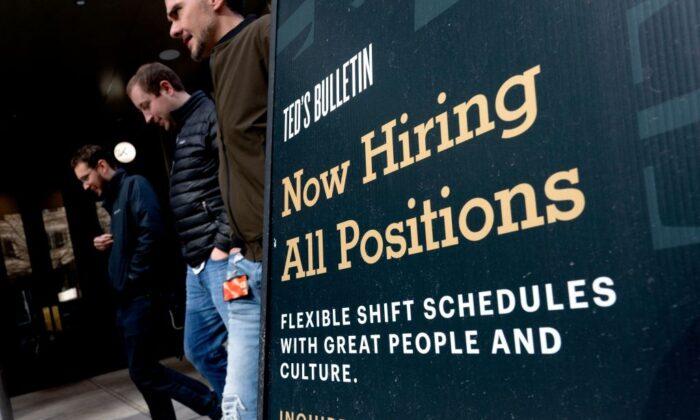The number of job openings was little changed in September following a downward revision in the previous month, according to the Bureau of Labor Statistics’ latest Job Openings and Labor Turnover Summary (JOLTS).
Job openings rose by 56,000, to 9.553 million, topping the consensus estimate of 9.25 million. Agency officials revised the August figure from 9.61 million to 9.497 million. The rate was flat at 5.7 percent.
This represented the fifth straight month of job openings below 10 million.
During the month, much of the growth was concentrated in the accommodation and food services and the arts and entertainment sectors. Employment opportunities declined for services (minus 124,000), the federal government (minus 43,000), and information (minus 41,000).
Job quits—voluntary separations launched by employees and an insight into how confident workers may be to terminate their position and leave the company to work somewhere else—were also roughly unchanged at 3.661 million, the JOLTS data show. The quits rate stood at 2.3 percent for the third straight month.
Manufacturing Employment
Employment activity levels in the manufacturing sector have slowed, the JOLTS data confirmed. Job openings, new hires, and total separations fell on a monthly basis compared to the same time a year ago.The Institute for Supply Management’s Purchasing Managers’ Index (PMI)—a measurement of the general direction of the industry—revealed shrinking factory activity in October.
After reaching a 10-month high of 49 in September, the PMI dropped to 46.7, falling short of market expectations of 49. Anything below 50 indicates contraction. New orders tumbled, and input price pressures climbed. The institute’s manufacturing employment figures plunged last month.
Conversely, the S&P Global Manufacturing PMI inched higher for the second consecutive month, touching the 50 mark. New orders and output growth accelerated at the fastest levels since September 2022 and May 2022, respectively. This was offset by a reacceleration of input costs and a sharp drop in employment levels. Business confidence plummeted to the lowest point of the year.
Labor and the Federal Reserve
After the summer slowdown, the U.S. labor market kicked into high gear in September, with the national economy creating 336,000 new jobs.Employment compensation has remained elevated. In the third quarter, the Employment Cost Index—the Federal Reserve’s preferred gauge of workers’ earnings—rose to a slightly hotter-than-expected pace of 1.1 percent, up from 1 percent.
Ahead of the much-anticipated October jobs report, private payroll processor ADP released its National Employment Report, highlighting 113,000 new positions last month. This was up from the increase of 89,000 in September but under the consensus estimate of 150,000.
Productivity levels and unit labor costs data for the July–September period will be released on Nov. 2.
The main event will be on Nov. 3, when the Bureau of Labor Statistics publishes the October nonfarm payrolls report. Economists expect 180,000 new jobs and an unchanged unemployment rate of 3.8 percent.
Monetary authorities have asserted that the Federal Reserve needs to see softer labor conditions and below-trend economic growth to support the central bank’s 2 percent inflation objective.
A treasure trove of mixed data might prove challenging for the institution’s tightening efforts, as a resilient labor market could enable solid consumer spending levels, Nela Richardson, the chief economist at ADP, said.
“No single industry dominated hiring this month, and big post-pandemic pay increases seem to be behind us,” she said in a statement. “In all, October’s numbers paint a well-rounded jobs picture. And while the labor market has slowed, it’s still enough to support strong consumer spending.”
The rate-setting Federal Open Market Committee will conclude its two-day policy meeting on Nov. 1. Officials are overwhelmingly expected to leave interest rates unchanged at a range of 5.25 percent to 5.50 percent. However, Fed Chair Jerome Powell has left the door open for higher rates if robust economic data warrant tighter policy.
“The committee will likely acknowledge the economy continues to expand, job gains have slowed but remain strong, and inflation still remains elevated despite the recent progress,” Judith Raneri, senior portfolio manager and vice president at Gabelli Funds, said in a note. “And in keeping with a hawkish bias, we anticipate that they will mention additional tightening may be appropriate if there is evidence of persistently above-trend growth, in combination with signs labor market is no longer easing, obviously leaving the option to do more.”
According to the Fed’s Summary of Economic Projections, officials forecast one more hike to lift the median policy rate to 5.6 percent.







